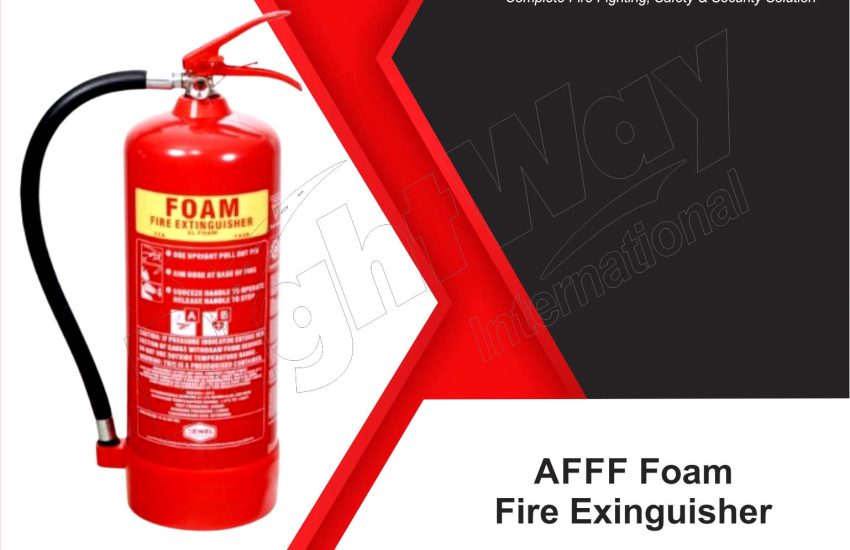AFFF Foam Fire Extinguisher are crucial for combating flammable liquid fires, providing effective fire suppression in various environments. This article will explore what AFFF foam extinguishers are, how they work, their applications, and essential maintenance tips, ensuring you understand their importance in fire safety.
What is an AFFF Foam Fire Extinguishers?
AFFF (Aqueous Film-Forming Foam) fire extinguishers are specialized extinguishing agents designed to combat Class B fires, primarily those involving flammable liquids such as gasoline, oil, and solvents. AFFF extinguishers create a foam blanket that smothers the fire, preventing oxygen from fueling the flames.
How AFFF Foam Fire Extinguishers Work:
AFFF foam extinguishers work through a combination of cooling and smothering effects:
- Foam Formation: When deployed, AFFF expands and forms a blanket of foam over the burning liquid.
- Oxygen Displacement: The foam layer displaces oxygen, cutting off the fire’s supply of air.
- Cooling Effect: The foam cools the surface, reducing the temperature and preventing re-ignition.
Advantages of AFFF Foam Fire Extinguishers:
- Effective Against Flammable Liquids: Specifically designed to tackle Class B fires, making them ideal for environments with high flammable liquid risks.
- Fast Suppression: The foam quickly suppresses flames, minimizing damage and ensuring safety.
- Less Cleanup: Unlike powder extinguishers, AFFF leaves minimal residue, making post-fire cleanup easier.
Applications of AFFF Foam Fire Extinguishers:
AFFF foam fire extinguishers are commonly used in:
- Industrial Facilities: Essential in factories, refineries, and chemical plants where flammable liquids are prevalent.
- Marine Applications: Used on ships and docks to manage potential fuel fires.
- Aviation: Found at airports for quick response to aircraft fuel fires.
Standards and Regulations:
Following established standards is vital for ensuring the effectiveness and safety of AFFF foam fire extinguishers. Important standards include:
- NFPA (National Fire Protection Association): Provides guidelines for fire extinguisher use and maintenance.
- ISO (International Organization for Standardization): Sets international standards for fire safety equipment.
- UL (Underwriters Laboratories): Certifies fire extinguishers for performance and safety.
Choosing the Right AFFF Foam Fire Extinguisher:
When selecting an AFFF foam fire extinguisher, consider the following factors:
- Capacity: Ensure the extinguisher has an appropriate capacity for the area it will serve.
- Mounting Options: Install in easily accessible locations, following local regulations.
- Extinguisher Ratings: Verify that the extinguisher is rated for Class B fires and meets necessary safety standards.
Maintenance and Safety Tips:
To maintain the effectiveness of AFFF foam fire extinguishers:
- Regular Inspections: Check extinguishers monthly for pressure and condition.
- Annual Servicing: Have extinguishers professionally serviced at least once a year.
- Training: Ensure staff are trained in the proper use of AFFF foam extinguishers.
Conclusion:
AFFF foam fire extinguishers are essential for fire safety, especially in environments where flammable liquids are present. Understanding their function, applications, and maintenance practices is crucial for effective fire prevention and response. By adhering to safety standards and ensuring regular training, you can enhance safety in your workplace or facility.


